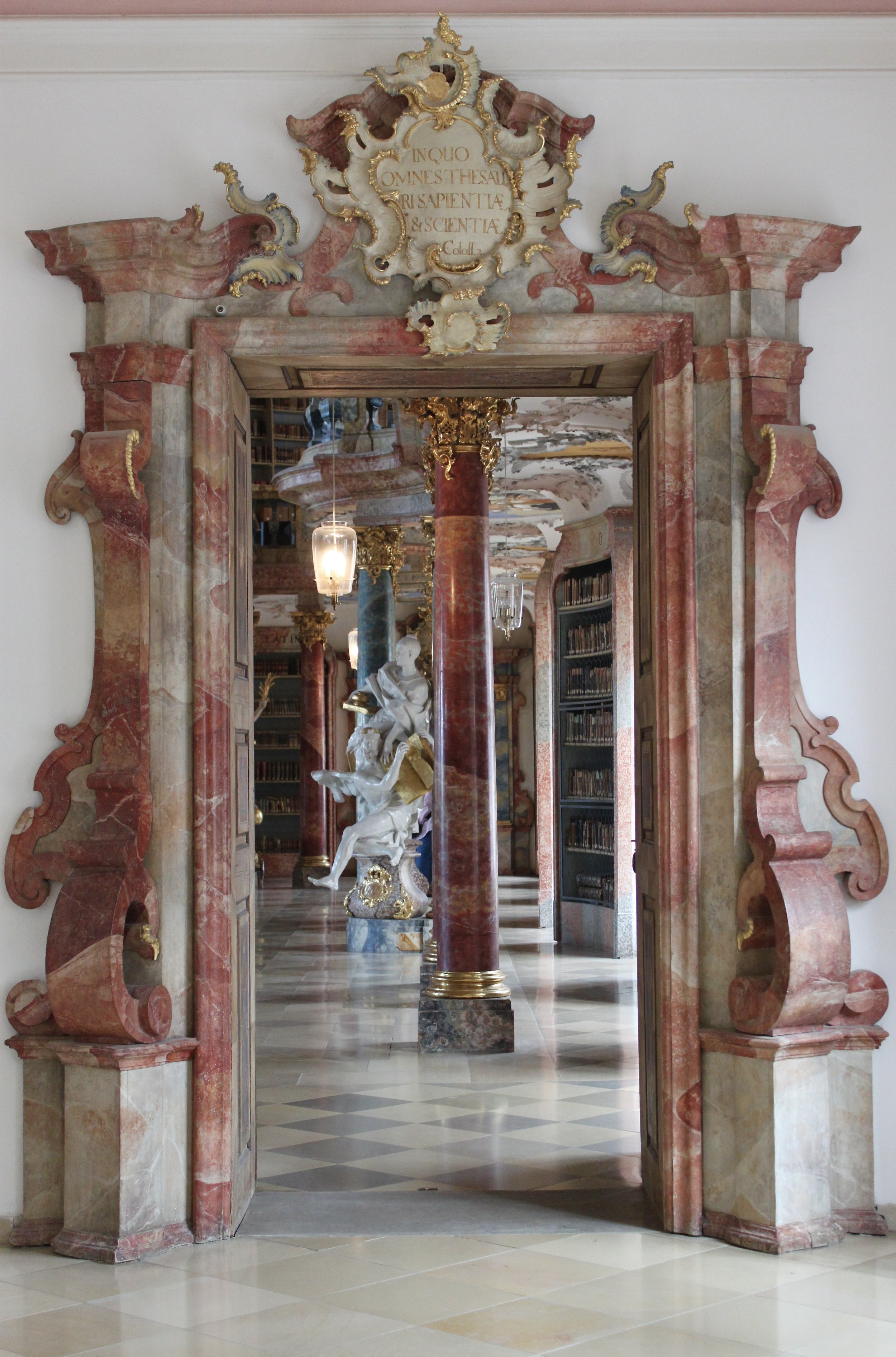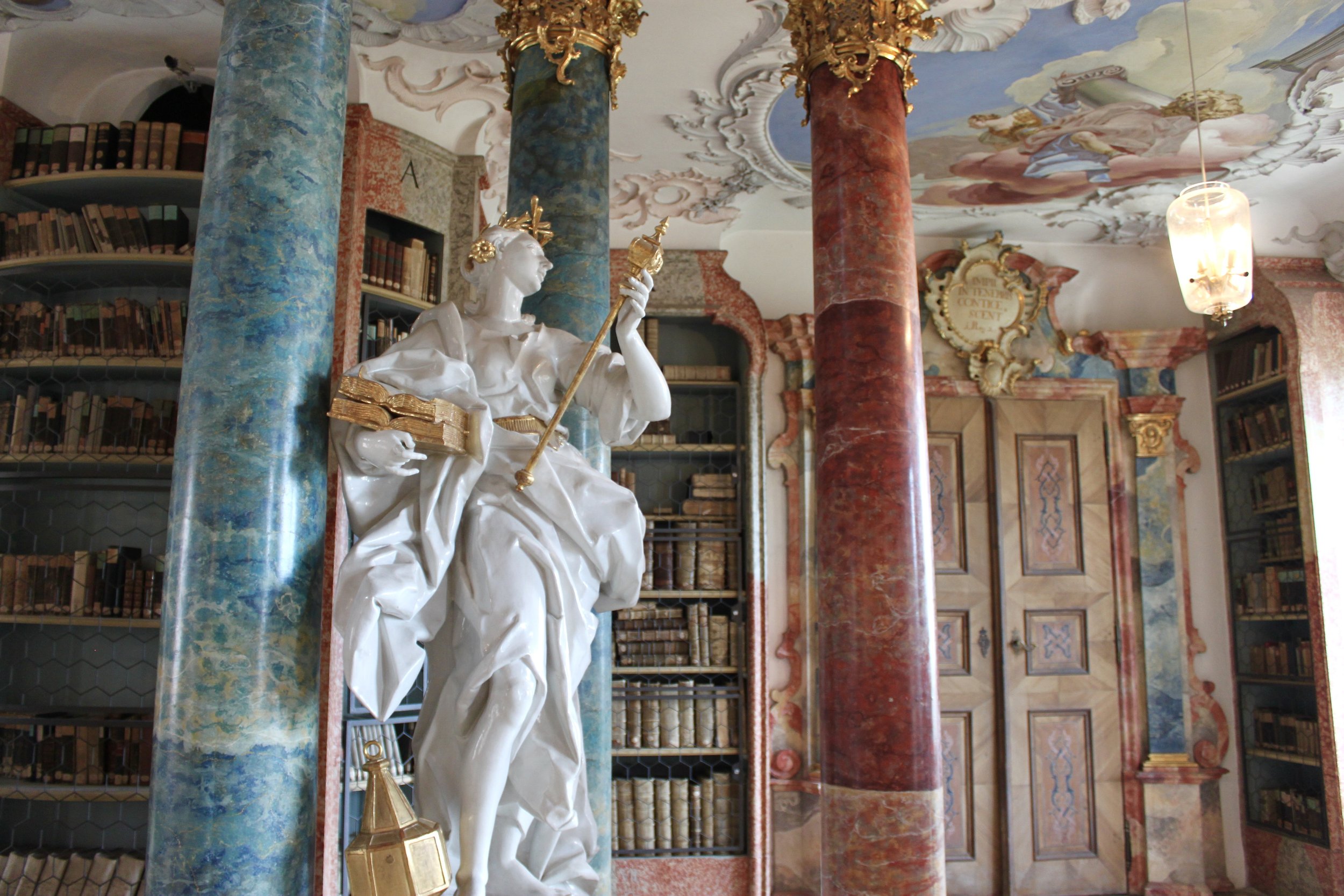WIBLINGEN ABBEY
When we parked in front of Wiblingen Abbey, CJ asked if we were in the wrong place. The Benedictine monastery, which was founded in 1093 but whose current buildings were built in the period between 1714 and 1781, looked pretty unassuming from the outside. However, it is what resides on the inside that counts!
Head into the abbey and purchase tickets for the library and monastery museum. The monastery museum admittedly does not have a lot of information translated into English (or any other language besides German, for that matter), but what you are really here for is the library.
Once you are done walking through the small museum, you will come upon one of the most beautiful libraries I have ever seen, and one of the most gorgeous displays of Rococo architecture. Rococo architecture can be recognized by its white and pastel colors, its ornate molding, and illusionary frescoes. These details (along with thousands of books) reside in the Library Hall of Wiblingen Abbey.
the entrance of the Library Hall at Wiblingen Abbey
Under the direction of Abbot Meinrad Hamberger, who wanted a space that would, “awaken a new desire and a new love for spiritual and learned exercises among the monks,” the idea to make not only a place that houses books – but an inspiring place that houses books – was started in 1740. The abbot appointed 25-year-old Franz Martin Kuen to paint the frescoes that adorn the library, and Dominikus Hermenegild to carve the eight statues that surround the central floor. These statues represent Jurisprudence, Natural Science, Mathematics, History, Obedience, Renunciation of the World, Faith, and Prayer, and are made from smooth porcelain. Or are they? In fact, they are made of wood. And the pink and blue marble-looking columns? Also made of wood! The statues and the columns are wonderful examples of the illusions that are peppered throughout Rococo architecture!
one of the “porcelain” statues in the Library Hall
Once the Library Hall has fulfilled its mission to inspire you to read (or maybe your desire to put on a ball gown and pretend to be the guest of honor at a royal party), exit and make your way on over to the Basilica on the grounds. St. Martin’s Basilica has a stunning interior, decorated in the neoclassical style with white walls and gold accents. The church is still actively used today, which was made quite clear to us as we opened the doors to thunderous organ music being played! Please note that entrance to the basilica is free.
inside the Basilica of St. Martin
Wiblingen Abbey is a 10-minute drive from Ulm, an hour drive from Stuttgart, and an hour and a half drive from Munich. Though these building interiors are picture perfect, we did not run into many tourists on our journey on a cloudy October Sunday. Considering the fact that we were met with immense crowds in places like Neuschwanstein and Munich, it was nice to have this pink dream of a monastery all to ourselves!


